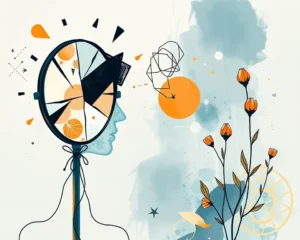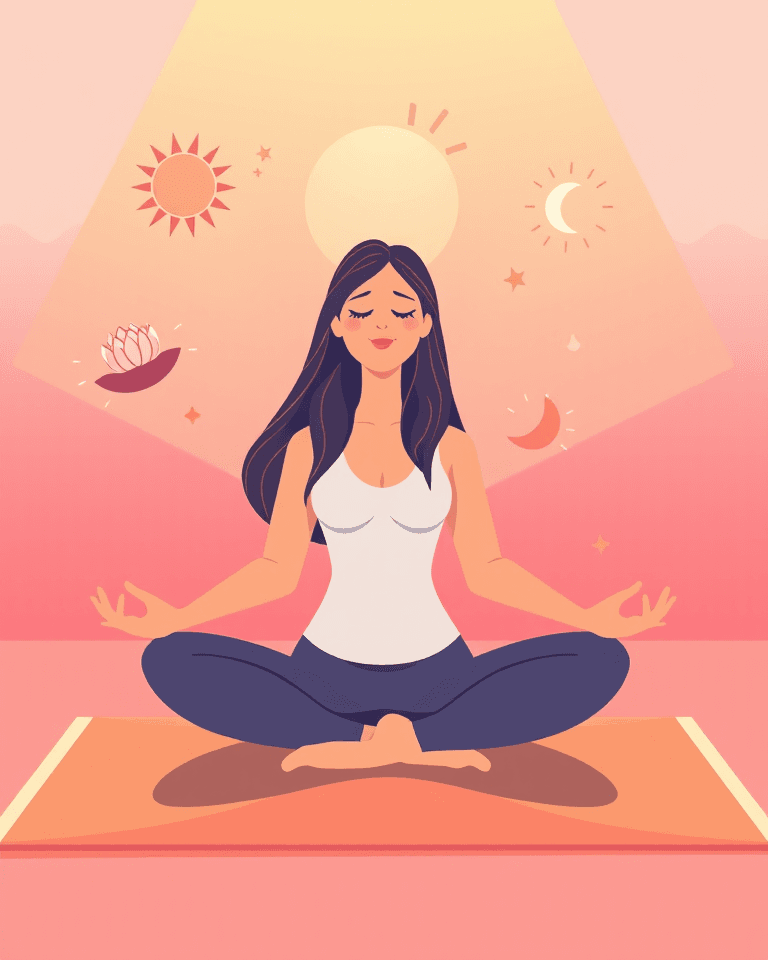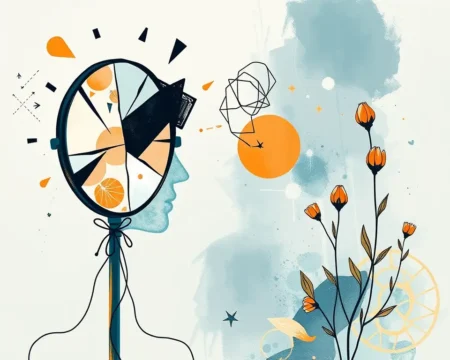As the new year begins, many seek ways to improve their well-being and find inner peace. Mindfulness, a practice of focusing on the present moment without judgment, has gained significant attention for its ability to reduce stress, improve focus, and enhance overall mental health. This article explores how you can incorporate mindfulness into your daily life in 2025 using various self-help tools and techniques.
Understanding Mindfulness
Mindfulness is a form of meditation where you focus on your current senses and feelings without interpretation or judgment. It involves using techniques like breathing exercises and guided imagery to relax the mind and body. Practicing mindfulness helps direct your attention away from negative or random thoughts, allowing you to engage more fully with the world around you. This can be especially helpful in our busy lives, where it’s easy to get caught up in planning, problem-solving, or daydreaming.
The Benefits of Mindfulness
Numerous studies highlight the positive impact of mindfulness on both mental and physical health. Some of the key benefits include:
- Stress Reduction: Mindfulness helps reduce activity in the amygdala, the part of the brain responsible for the stress response. This leads to a lower background level of stress.
- Anxiety and Depression Relief: Mindfulness-based treatments have been shown to effectively reduce symptoms of anxiety and depression. It helps individuals stay grounded in the present, rather than dwelling on the past or worrying about the future.
- Improved Sleep: Regular mindfulness practice can promote better sleep quality and help manage insomnia.
- Pain Management: Mindfulness can help people cope with chronic pain by reducing its severity and related distress.
- Enhanced Focus and Attention: Mindfulness training improves the ability to pay attention and focus, leading to better memory and mental performance.
- Better Emotional Regulation: It enables you to understand your emotions better and cope with difficult thoughts more effectively, fostering a sense of calm.
- Overall Well-being: By savoring the present moment and engaging fully in activities, mindfulness makes it easier to find joy and handle challenges effectively.
Simple Mindfulness Practices
Integrating mindfulness into your daily life doesn’t have to be complicated or time-consuming. Here are some simple practices to get you started:
Mindful Breathing
A foundational practice, mindful breathing involves focusing on the sensation of your breath.
- Find a comfortable position, either sitting or lying down.
- Close your eyes gently and bring your attention to your breath.
- Notice the natural rise and fall of your chest or abdomen.
- When your mind wanders, gently redirect your focus back to your breath without judgment.
- Start with just a few minutes each day and gradually increase the duration as you become more comfortable.
Body Scan Meditation
The body scan involves systematically focusing attention on different parts of your body.
- Lie down on your back with your arms at your sides and legs extended.
- Slowly bring your attention to your toes, noticing any sensations without judgment.
- Gradually move your focus up your body, paying attention to each area.
- Be aware of any feelings, sensations, or thoughts associated with each part of the body.
- Continue until you’ve scanned your whole body from head to toe or vice versa.
Mindful Walking
Mindful walking involves paying attention to the physical sensations of walking.
- As you walk, focus on the feeling of your feet making contact with the ground.
- Notice the movement of your body, the sway of your arms, and the rhythm of your steps.
- Be aware of your surroundings, taking in the sights, sounds, and smells.
- When your mind wanders, gently bring your focus back to the act of walking.
Paying Attention to Everyday Activities
Mindfulness can be incorporated into everyday tasks.
- While eating, pay close attention to the taste, smell, and texture of your food.
- When washing dishes, notice the feel of the water and the sensation of the soap.
- During your morning routine, be present and aware of each step.
Mindful Wake-Up
Start your day with intention.
- When you wake up, take a moment to check in with yourself.
- Notice how you feel physically and emotionally.
- Set an intention for the day, keeping your core values in mind.
- This strengthens the connection between your conscious thinking and your emotional motivations.
Staying in the Present
- Throughout the day, if your mind wanders, gently bring your thoughts back to the present moment.
- Avoid judging distractions, and simply redirect your attention.
- Make it a habit to pause and observe the details of your surroundings.
Self-Help Tools for Mindfulness
Several resources are available to support your mindfulness journey, including apps, books, and courses.
Mindfulness Apps
Mindfulness apps provide guided meditations, breathing exercises, and other tools to help you practice regularly. Some of the top-rated apps for 2025 include:
- Calm: Known for its serene aesthetics and soothing content, Calm offers daily meditations, calming music, and sleep stories. It is recommended for its holistic approach to mental wellness, and it is suitable for users looking to improve sleep or boost focus.
- Headspace: Headspace is a popular choice for beginners, featuring user-friendly interfaces, engaging animations, and guided meditations for stress reduction and improved sleep.
- Insight Timer: This app boasts a vast library of free meditations, customizable timer options, and live sessions with renowned teachers. It is an ideal option for users who seek variety.
- The Mindfulness App: Offers guided meditations and a timer, with reminders to stay consistent. It’s suitable for both beginners and advanced users, with various sessions focused on stress, sleep, and focus.
- Healthy Minds Program: A free app that provides guided meditations, simple lessons, and tools for building healthy habits, designed for those seeking calmness.
- Ten Percent Happier: Designed for skeptics, this app offers a science-based approach with practical, down-to-earth meditation guidance.
- Breethe: This app offers a comprehensive approach, combining meditation with broader wellness practices and focusing on real-life situations like relationships or work challenges.
- Simple Habit: It offers short 5 minute meditations specifically tailored for individuals with busy schedules, focusing on anxiety, focus and building healthier habits.
- Balance: Known for daily meditation, this app is perfect for consistent practice.
- Mindfulness Coach: Developed by the U.S. Department of Veterans Affairs, this free app offers simple tools and exercises to help manage stress and anxiety.
These apps provide guided sessions, personalized settings, and progress tracking to support your mindfulness practice.
Mindfulness Courses and Programs
Mindfulness-Based Stress Reduction (MBSR) is a structured program developed by Jon Kabat-Zinn, typically involving weekly group classes and daily mindfulness exercises over 8-10 weeks. Other courses include Mindfulness-Based Cognitive Therapy (MBCT), which combines mindfulness with cognitive therapy techniques. Additionally, many online resources and courses are available from medical schools and universities, often with evidence-based approaches. These programs help in incorporating mindfulness through yoga and meditation practices.
Books and Journals
Reading books on mindfulness can deepen your understanding of the practice, and journaling helps to reflect on your thoughts and feelings. “The 2025 Mental Health Planner: A Year of Self-Care, Mindfulness, and Personal Growth” is a resource offering tools for self-care and personal development, including daily and weekly planners, self-reflection prompts, and a 2025 calendar.
Maintaining Mindfulness Daily
To make mindfulness a lasting habit, consider these tips:
- Set Clear Intentions: Start by asking yourself why you want to embrace mindfulness and what you hope to achieve through it.
- Start Small: Begin with just a few minutes of practice each day, gradually extending the duration as you become more comfortable.
- Choose a Consistent Schedule: Select a specific time of day for your practice, such as morning, lunchtime, or before bed.
- Use Reminders: Set alarms, place sticky notes, or use app reminders to prompt your mindfulness practice.
- Be Patient: It’s normal for your mind to wander. Be kind to yourself, and gently redirect your focus when this happens.
- Incorporate Mindfulness Throughout the Day: You can practice mindfulness in many daily tasks such as eating, washing dishes or during your morning routine.
- Reflect Regularly: Take some time each day to reflect on your mindfulness practice, noting the benefits you experience.
Mindfulness and New Year’s Resolutions
Instead of making generic resolutions, approach the New Year with mindfulness and intention.
- Reflect on the past year and identify areas of imbalance or disconnection from your values.
- Focus on intentions rather than outcomes, shifting your attention to the process.
- Set SMART goals, but also be compassionate with yourself during your journey.
- Incorporate daily mindfulness check-ins, gratitude journaling, and mindful breathing to reinforce positive habits.
- Set aside some time for quiet contemplation, using a journal to reflect upon your goals for the coming year.
- Engage in affirmation meditation, repeating your resolution to reinforce it.
Mindfulness Beyond Meditation
Mindfulness extends beyond formal meditation. It is about being present in each moment and can be practiced during daily activities. Whether you’re walking, eating, or interacting with others, focus on the present sensations and experiences. This approach can enhance your appreciation for the simple moments of life and bring more peace and joy into your days.
By integrating these practices and tools into your daily routine, you can cultivate a more mindful and fulfilling life in 2025, reducing stress and anxiety and improving your overall well-being.










